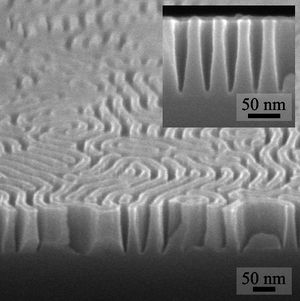Realspace

Realspace or direct-space is simply the regular 3D space that we inhabit. In scattering, it is introduced as a term to differentiate from reciprocal-space (a.k.a. inverse-space). Whereas reciprocal-space refers to the Fourier transform of the sample's structure, realspace refers to the actual structure: the electron-density spatial distribution (as imaged in SEM, TEM, AFM, STM, etc.).
Realspace functions
Scattering data can be converted into a corresponding realspace representation. Normally, scattering data cannot be simply inverted (via Fourier transform) to recover the exact realspace structure. This is known as the phase problem: experiments typically record the intensity (but not phase) of scattered radiation, making unambiguous inversion impossible (note that coherent techniques, such as CDI or ptychography attempt to work around this). However, the inverse-space data of a scattering experiment can at least be converted into a statistical (or average) realspace representation. Total one-dimensional scattering can be converted into a realspace function that describes the amount of correlation across various distances (known as a Pair Distribution Function, or PDF).
- Billinge, S. J. L. & Thorpe, M. F. (1998). Local Structure from Diffraction, edited by S. J. L. Billinge. New York: Plenum Press.
- P. F. Peterson, M. Gutmann, Th. Proffen and S. J. L. Billinge PDFgetN: a user-friendly program to extract the total scattering structure factor and the pair distribution function from neutron powder diffraction data J. Appl. Cryst. 2000, 33, 1192 doi: 10.1107/S0021889800007123
Two-dimensional scattering data
- G. Fritz-Popovski Interpretation of two-dimensional real-space functions obtained from small-angle scattering data of oriented microstructures J. Appl. Cryst. 2015, 48 doi: 10.1107/S1600576714024972